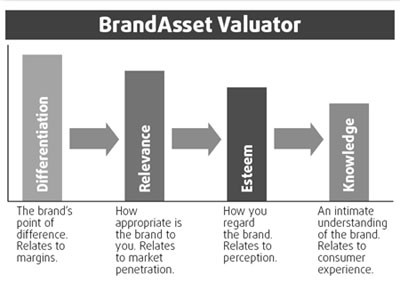The pillars of a successful branding campaign
Think about any of the most powerful brands on the planet; Virgin or FedEx, for example, Titleist, Starbucks, Google or YouTube. It doesn't take more than a second to mentally register what each stands for. Why?
They share the three critical factors driving every successful brand. First, all have identified something unique to represent in the minds of consumers. Second, they've determined that this difference is relevant to consumers. And third, they've made this relevant differentiation simple for people to understand.
In a world as hyper-branded as ours, there is no time for questions about what a brand represents if that brand wants to succeed.

Now, if you were to ask people how successful brands get built, they'd probably say it starts with advertising or public relations, the online or retail experiences, the packaging or promotions. What we call branding.
Well, they'd be wrong. And one of the proprietary tools in the brand industry demonstrates this. Developed by ad agency Young & Rubicam and called BrandAsset Valuator (BAV), it's based on the inter-relationship of four brand pillars:
Differentiation - what makes the brand unique
Relevance - how appropriate the brand is to consumer needs
Esteem - how the brand is regarded
Knowledge - how intimately the brand is understood
BAV shows that brand success doesn't start with the branding, but with the establishment of a point of differentiation. It then demonstrates that the relationship between differentiation and relevance determines a brand's strength.
A brand that's different without being relevant has no value. Consider the Segway, for example, a two-wheeled power scooter for adults. Launched with an unprecedented degree of hype and enormous investment, consumers couldn't see why they needed these things and the brand is still trying to overcome an identity crisis.
BAV shows that too much relevance is also a problem. It means the brand has become a commodity with price being the only reason to buy. Many airlines are in this situation. It's hard to determine why flying one is any better or different than another.
The last two pillars, esteem and knowledge, make up brand stature. A brand with a high level of esteem enjoys a stellar reputation although people may not know a lot about it. In this case, the brand is in perfect position to convince consumers to get to know it better.
Too much knowledge and not enough esteem, on the other hand, can be a dangerous thing. Consumers might say, "Hey, I know a lot about you and you're nothing special."
Given the exponential increase in global competition, identifying a unique and meaningful idea on which to build a brand has become very challenging. I advise clients that the best places to look for ideas may not be in the office. It's listening to family and friends, reading blogs, and forgetting over-written strategy documents. I suggest they become like the American comedian Jerry Seinfeld, an astute observer of the obvious, and seek out some universal truth that may have been overlooked.
Bose, for example, designed its line of superior headphones by observing an obvious gap in the market and developing a solution. As Jerry might have asked: "Ever wonder why they hand you those itty, bitty headphones on an airplane and expect you to hear the movie over the roar of Rolls-Royce engines?"
While a relevantly different idea is essential to brand success, so, too, is the third factor, making this idea simple to understand. People have to "get it", especially the people responsible for doing the branding.
To this end, all successful brands capture their idea in a brand driver - a simple phrase that sums up and evokes exactly what the brand stands for without need for explanation. The simplicity of a brand driver allows those doing the branding to grasp its intent and intuitively deliver experiences consistent with the brand promise.
As a final point, unlike years ago, when branding consisted primarily of traditional advertising, building a brand these days is like a journey. Consumers travel from one brand interaction to another, picking up branding signals along the way.
While all branding signals must be in alignment with the brand driver to be effective, not all are equal in their impact on consumers. Creating a map of a customer's journey with the brand helps illustrate which points of interaction have the greatest potential to reinforce appropriate brand associations and where to make your greatest branding investments.
There is no secret to brand success. The best brands find something relevantly different to represent in the minds of consumers and make it simple to understand. While not always simple to achieve, it's just that simple.
The author is managing director at the New York office of Landor Associates. His latest book is BrandSimple, published by Palgrave Macmillan
(China Daily 10/11/2007 page15)














